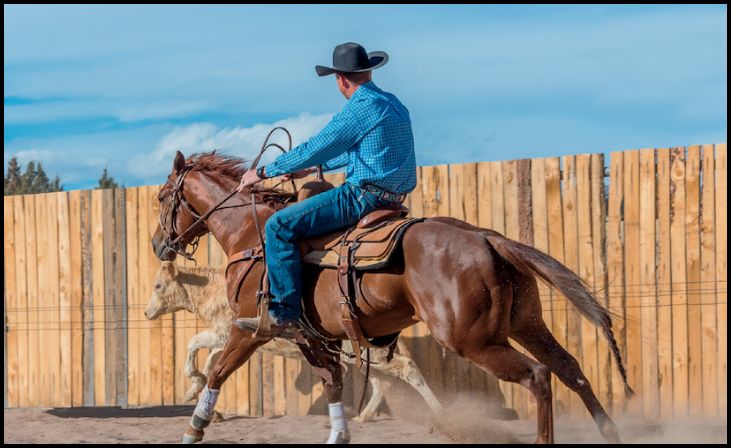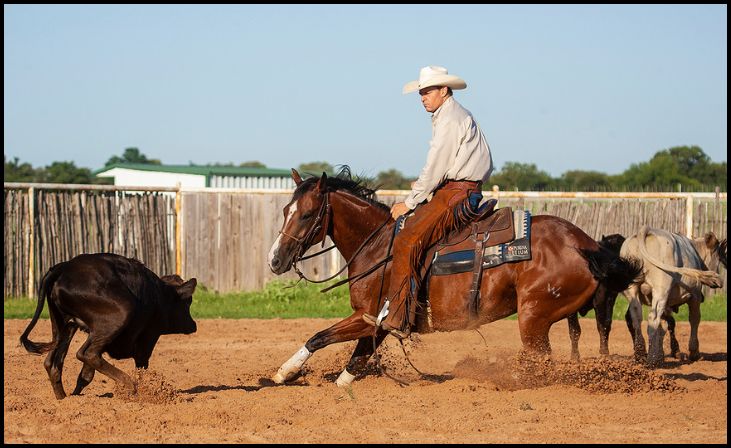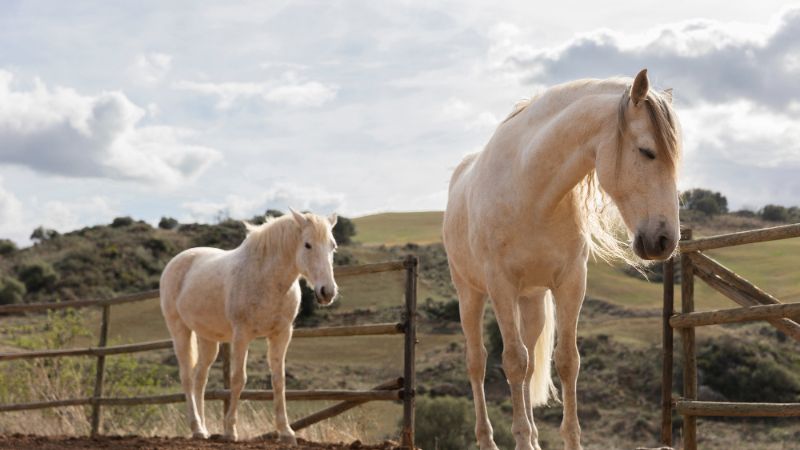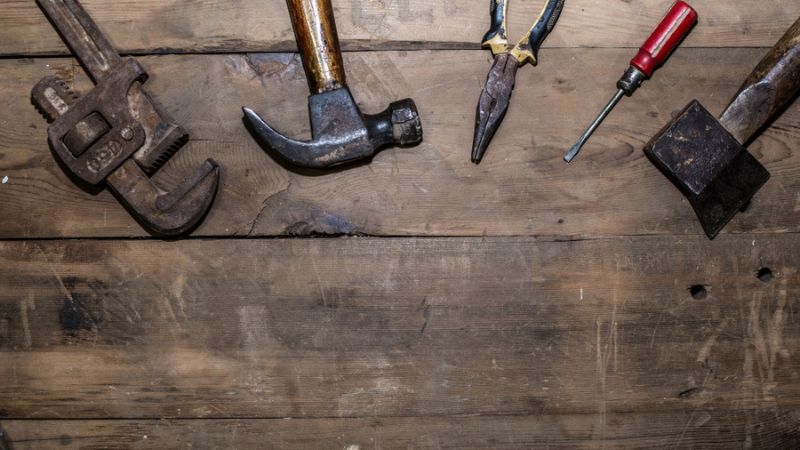How To Teach a Cutting Horse To Work Cattle – Introducing a cutting horse to cattle is a delicate process that hinges on gradual exposure and patient guidance. Initially, the horse should be familiarized with the presence of cattle in a controlled environment, allowing it to observe and acclimate to their movements and behaviors from a safe distance.
Groundwork exercises establish the foundation of trust and responsiveness between the horse and trainer, ensuring a solid communication base. Desensitization techniques help the horse overcome any apprehension towards the sights, sounds, and smells associated with cattle, fostering a calm and focused demeanor.
Basic commands such as stop, go, turn, and back up are taught using gentle cues and positive reinforcement, laying the groundwork for more advanced training. This introductory phase sets the stage for the horse to gradually progress into working with cattle, building upon its natural instincts and agility in a structured and supportive learning environment.
How To Teach a Cutting Horse To Work Cattle
Basic Training:

Before delving into cutting training, ensure your horse has solid foundational skills. This includes obedience to commands like stop, go, and turn, as well as responsiveness to your cues. Establishing trust and respect between you and your horse is paramount.
Spend time bonding with your horse through groundwork exercises and regular riding sessions. This will create a strong partnership, making it easier to introduce more advanced training techniques later on.
Also Read – Tips For Buying a Cutting Horse
Exposure to Cattle:
Gradually introduce your horse to cattle in a controlled environment. Start by allowing the horse to observe cattle from a distance, ensuring it remains calm and relaxed. Slowly decrease the distance between the horse and the cattle as it becomes more comfortable.
Use positive reinforcement, such as treats or praise, to associate the presence of cattle with positive experiences. This will help your horse build confidence and curiosity towards cattle, rather than fear or apprehension.
Desensitization:
Help your horse become familiar with the sights, sounds, and smells of cattle through desensitization exercises. Expose the horse to recordings of cattle sounds, such as mooing and rustling, while rewarding calm behavior.
Gradually introduce the horse to the smell of cattle by placing objects like hides or manure in its environment. Practice desensitization exercises regularly to reinforce positive associations and build the horse’s confidence around cattle.
Teach the Basics of Cutting:

Start by reinforcing basic riding maneuvers such as stopping, turning, and backing up. Use consistent cues to communicate with your horse, reinforcing desired responses with praise or treats.
Introduce the concept of moving away from pressure, teaching your horse to respond to leg cues and subtle shifts in your body weight. Focus on building a strong foundation of obedience and responsiveness, as these skills will be essential for more advanced cutting maneuvers.
Introduction to the Herd:
Begin working with small groups of calm, docile cattle in a controlled arena environment. Guide your horse to move the cattle around the arena, focusing on maintaining a calm and steady pace. Encourage the horse to keep its attention on the cattle and to anticipate their movements.
Gradually introduce the concept of separating individual cows from the herd, rewarding the horse for successful attempts. Be patient and allow your horse to learn at its own pace, gradually increasing the difficulty as it becomes more proficient.
Teach Reading Cattle:
Help your horse learn to anticipate the movements and behavior of cattle by observing their body language and subtle cues. Teach your horse to focus on the cow’s movements, such as changes in direction or speed, to anticipate its next move.
Encourage your horse to maintain a balanced and agile stance, ready to react quickly to the cow’s actions. Practice reading cattle regularly in various situations to reinforce your horse’s understanding and sharpen its instincts.
Encourage Natural Instincts:
Reward your horse for displaying natural cutting instincts, such as maintaining focus on the cow, anticipating its movements, and staying balanced and agile. Praise your horse for showing interest in working cattle and for exhibiting behaviors such as circling, tracking, and mirroring the movements of the cow.
Use positive reinforcement techniques, such as treats or verbal praise, to encourage and motivate your horse during training sessions. By nurturing and reinforcing your horse’s natural instincts, you can build a strong foundation for successful cutting work.
Build Confidence:
Gradually increase the difficulty of the tasks as your horse gains confidence and proficiency. Introduce more challenging cattle, such as those that are more agile or spirited, to test your horse’s skills. Provide opportunities for your horse to succeed and build its confidence through positive reinforcement and praise.
Be patient and supportive, allowing your horse to progress at its own pace while offering guidance and encouragement along the way. By building your horse’s confidence in its abilities and reinforcing positive experiences, you can help it become a skilled and reliable cutting horse.
Consistent Practice:
Practice regularly to reinforce your horse’s training and maintain its skills. Schedule regular training sessions focused on cutting exercises, consistency is key to developing a strong cutting horse. Vary your training routine to keep your horse engaged and challenged, incorporating different scenarios and challenges to help it generalize its skills.
Be patient and persistent, as mastering cutting takes time and practice. By consistently working with your horse and providing opportunities for it to learn and grow, you can help it reach its full potential as a cutting horse.
Seek Professional Guidance:

If you’re new to training cutting horses, consider seeking guidance from experienced trainers who specialize in this discipline. Professional trainers can provide valuable insights, feedback, and assistance in fine-tuning your horse’s skills.
They can offer personalized training plans tailored to your horse’s individual needs and temperament, helping you overcome any challenges you may encounter along the way. Additionally, working with a professional trainer can help ensure that you and your horse develop safe and effective cutting techniques, maximizing your chances of success in the show ring or on the ranch.
Conclusion
In conclusion, consistent practice, positive reinforcement, and gradual progression are key to successfully teaching a cutting horse to work cattle. By reinforcing positive behaviors, providing regular opportunities for practice, and offering constructive feedback, the horse’s skills and confidence can be continually developed and refined.
Recognizing that cutting is an ongoing learning process, maintaining patience and perseverance will ultimately lead to a strong partnership between horse and rider, capable of confidently navigating the challenges of working cattle in various scenarios.
FAQs
What age should I start training a cutting horse to work cattle?
Ideally, training can begin around 2 to 3 years old, once the horse has developed physically and mentally. However, individual readiness and temperament should also be considered.
How long does it take to train a cutting horse?
Training duration varies depending on the horse’s temperament, previous experience, and the consistency of training. It can take several months to a year or more to fully train a cutting horse.




